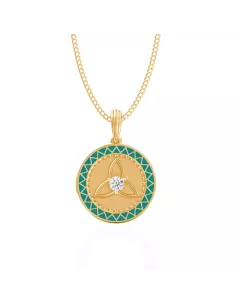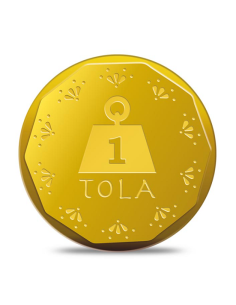Exclusive Deals & Trending Items


Divine Solitaires Enamel Brass Jacket with 0.14 carats EF VVS Diamond Studded in 2gm 22kt Gold Coin
Shop NowHave you ever thought about how central banks like the US Federal Reserve (US Fed) and the European Central Bank (ECB) use gold in their plans? Gold is very important in the world of finance. It’s seen as a safe place to put money when things get shaky.
The World Gold Council’s reports give us a peek into why people want gold and what central banks do with it. Knowing how these big players use gold can help you make better choices for your own gold investment plans.
Key Takeaways
- The US Fed and ECB use gold as a reserve asset to diversify their portfolios.
- Gold demand is driven by central banks, investors, and jewelry consumption.
- The World Gold Council provides analysis on gold market trends and drivers.
- Understanding central bank actions can inform your investment decisions.
- Gold remains a significant player in global finance and monetary strategies.
The Historical Evolution of Gold in Central Banking
Gold has always been key in money systems, changing from the gold standard to today’s fiat currency. You might be curious about gold’s role through time. Gold’s journey in central banking shows how it adapts to economic changes and policy needs.


From the Gold Standard to Bretton Woods System
The gold standard linked currencies directly to gold until the early 20th century. The Great Depression made it less popular as countries devalued their money to help their economies. The Bretton Woods system, started in 1944, was a big change. It made the US dollar the global reserve currency, tied to gold at $35 per ounce.
“The Bretton Woods system was designed to promote exchange rate stability and prevent competitive devaluations.”
This system helped with international trade and financial stability. But, it had big problems, like the Triffin dilemma, which led to its end.
| System | Key Features | Outcome |
|---|---|---|
| Gold Standard | Currencies directly linked to gold | Constrained monetary policy |
| Bretton Woods | US dollar pegged to gold; other currencies pegged to dollar | Promoted international trade but faced inherent flaws |
The Nixon Shock and Transition to Fiat Currency
The Nixon Shock in 1971 was a big change. The US stopped making dollars exchangeable for gold. This ended the Bretton Woods system and started the fiat currency era, where money value comes from supply and demand.
The shift to fiat currency let central banks control money better. They could print more money to help the economy when it’s down.
These events have shaped gold’s role in central banking today. They influence money strategies and the global economy.
Current Gold Holdings: Fed vs ECB Balance Sheets
The Federal Reserve and ECB’s gold holdings are key in their monetary policies. They ensure financial stability. These gold reserves are crucial for their economic stability measures.
The Federal Reserve’s Gold Reserves and Valuation Methods
The Federal Reserve has a lot of gold, valued at historical cost on its balance sheet. It has about 8,133.5 tonnes of gold. This makes it one of the biggest gold holders worldwide.
The Fed values its gold conservatively, using the historical cost principle. This means it’s valued at its original purchase price, not the current market price. For example, if it bought gold at $35 per ounce, it’s still valued at that, even if the market price is much higher.


The European Central Bank’s Gold Portfolio Management
The European Central Bank (ECB) also has a big gold reserve. But it manages it differently than the Fed. Most of the ECB’s gold is held by the national central banks of the Eurosystem.
The ECB values its gold at market value, updated quarterly. This shows the current economic situation better. As of the latest data, the ECB has about 504.8 tonnes of gold.
| Central Bank | Gold Reserves (tonnes) | Valuation Method |
|---|---|---|
| Federal Reserve | 8,133.5 | Historical Cost |
| European Central Bank | 504.8 | Market Value (Quarterly Adjustment) |
Knowing how the Fed and ECB handle gold gives us insight into their monetary strategies. Both see gold’s value, but their methods show their different economic situations and goals.
Why Gold Remains Crucial in Modern Monetary Policy
Gold plays a key role in modern monetary policy, offering stability in uncertain times. Central banks rely on gold as a trusted asset. You might ask, why is gold so vital in today’s economy?
Gold’s value comes from its ability to provide stability during financial crises. It also helps diversify central banks’ portfolios.
Economic Stability During Financial Crises
Gold has always been a safe haven during economic troubles. For example, in the 2008 crisis, gold prices rose as investors fled risky markets.
This shows gold’s role in keeping the economy stable. Central banks keep gold to protect against currency and market risks.
Gold acts as a shield against economic downturns. It offers security that other assets can’t match.
Strategic Portfolio Diversification for Central Banks
Gold is key for central banks’ portfolio diversification. Mixing assets like gold, foreign currencies, and reserves reduces risk. This strategy is vital for keeping a nation’s currency and financial system stable.
For instance, the European Central Bank and the Federal Reserve hold large gold reserves. This is part of their asset management plan.
Learning about portfolio diversification and its role in central banking is beneficial.
Gold as a Strategic Reserve Asset for Central Banks
Gold is more than just a precious metal for central banks. It’s a key strategic reserve asset. Central banks hold gold to ensure financial stability and to diversify their assets.
Balance Sheet Strengthening Mechanisms
Gold is crucial for a central bank’s balance sheet. It helps improve the health and stability of their financial statements. Gold reserves can act as a buffer against financial shocks, offering security that other assets may not.
The table below shows the gold holdings of major central banks. It highlights their importance in the overall reserve assets.
| Central Bank | Gold Reserves (Tonnes) | % of Total Reserves |
|---|---|---|
| Federal Reserve (US) | 8,133.5 | around 70% |
| European Central Bank | 504.8 | around 30% |
Hedging Against Currency Fluctuations and Inflation
Gold is also used as a hedge against currency fluctuations and inflation. In times of economic uncertainty, gold tends to retain its value. This makes it attractive for central banks to protect their reserve portfolios.
By adding gold to their reserves, central banks can reduce risks from currency and inflation. This helps keep the value of their reserves stable.
The Federal Reserve’s Gold Strategy and Operations
It’s important to understand how the Federal Reserve handles gold. The Fed’s gold is a big part of its reserves. It plays a key role in keeping the economy stable.
Gold Certificates and Their Role in Monetary Base
Gold certificates are a big part of the Fed’s work. They show the Fed’s gold and help back the money in circulation. This helps the Fed manage its money well.
“The use of gold certificates shows gold’s lasting role in money,” experts say. The Fed’s use of gold certificates shows it’s serious about a strong financial system.
The Fed has rules for its gold. These rules make sure the Fed’s gold work is open and fair.
Accounting Practices for Gold Assets
The Fed has special ways to value its gold. These methods give a clear view of the Fed’s gold and its effect on its money.
The Fed’s gold accounting follows clear rules. This makes it easy for everyone to see how the Fed’s gold strategy affects the economy.
The Federal Reserve’s gold strategy is a key part of its money policy. Knowing about it is important for investors and those making policies.
How the ECB Manages Its Gold Reserves Differently
The ECB manages its gold reserves in a way that’s different from the Fed. This is because of its role in the European Union and its monetary policy. The ECB’s gold reserves are spread out among the national central banks of Eurozone countries.
This means the ECB sets monetary policy, but the gold is stored and managed by each country’s central bank. This setup is part of the European Monetary Union’s cooperative structure.
Decentralized Gold Holdings in the Eurosystem
The way gold is held in the Eurosystem shows the teamwork of the European Monetary Union. The ECB itself doesn’t hold gold. Instead, the gold is shared among the national central banks.
| Country | Central Bank | Gold Holdings (Tonnes) |
|---|---|---|
| Germany | Deutsche Bundesbank | 3,363 |
| Italy | Banca d’Italia | 2,452 |
| France | Banque de France | 2,436 |
This setup gives more flexibility. It also shows the importance of gold in these countries’ history and culture.
Gold Revaluation Accounts and Market-to-Market Practices
The ECB uses gold revaluation accounts to update the value of its gold. These accounts change the gold’s value based on today’s market prices. This makes the ECB’s financial reports more accurate.
“The revaluation accounts for gold and foreign exchange ensure that the ECB’s financial statements reflect the economic reality of its reserve assets.”
Using market-to-market practices for gold revaluation makes the ECB’s financial reports clear and up-to-date. This is important for transparency.
Learning about the ECB’s gold reserve management helps us understand European monetary policy and gold’s role in the world economy.
Central Bank Gold Market Interventions: Facts vs Fiction
Have you heard that central banks really control the gold market? It’s a common claim, but how much truth is there? Central banks like the US Federal Reserve and the European Central Bank have been in the gold market for years. But, how much they do and how they do it is often not clear.
Historical Gold Market Operations by Central Banks
Central banks have been key players in the gold market for a long time. They hold gold reserves and also take part in gold market activities. But, their actions are sometimes secret, creating myths and misunderstandings. For example, they lease gold, which can change gold prices and how much gold is available.
Transparency Requirements and Modern Reporting Standards
Recently, there’s been a push for more openness in central banks’ gold dealings. The International Monetary Fund and the World Gold Council have been big in making this happen. Now, many central banks share more about their gold reserves and transactions. This makes it clearer how they affect the gold market.
| Central Bank | Gold Holdings (Tonnes) | Transparency Level |
|---|---|---|
| Federal Reserve (US) | 8,133.5 | High |
| European Central Bank | 332.8 | High |
| Bank of England | 310.3 | High |
Looking at the past and present of central banks in the gold market helps us see the truth. Myths and guesses will still exist, but more openness has made their role clearer.
How Central Bank Policies Impact Global Gold Prices
It’s key to know how central banks’ choices affect gold prices. These banks are big players in the global economy. Their policies greatly influence gold prices.
The Federal Reserve and the European Central Bank are very influential. They set interest rates and use quantitative easing. These actions shape the economy and how investors feel about gold.
Direct and Indirect Effects on Gold Market Volatility
Central bank policies can directly change gold prices. For example, when interest rates go up, gold becomes less attractive. This can make gold prices drop.
Indirectly, these policies can also affect gold prices. They can change currency values and inflation expectations. This can make gold more expensive and increase its price.
Correlation Between Policy Announcements and Gold Movements
When central banks make policy announcements, the market watches closely. These announcements can cause big changes in gold prices. They shape what people think about the economy’s future.
A dovish policy can make gold prices go up. This is because investors look for safe assets when rates are low. On the other hand, a hawkish policy can lead to higher rates and lower gold prices.
Knowing how central bank policies affect gold prices helps investors. It guides them in making smart choices, especially when the economy is uncertain.
Gold Reserves and Currency Stability Relationships
As global economic worries grow, the link between gold reserves and currency stability is key. You might ask how central banks like the US Fed and ECB use gold. They do this to keep their currencies stable.
Gold reserves help a nation’s currency stay strong during tough times. The amount of gold a central bank has can greatly affect its currency’s value. This is important in the foreign exchange market.
Gold-to-GDP Ratios as Economic Indicators
The gold-to-GDP ratio shows a country’s gold reserves compared to its economic output. This ratio gives clues about a nation’s economic health. It shows if it can handle financial shocks well.
A higher gold-to-GDP ratio might mean a country’s economy is strong. It suggests it can keep its currency stable. Let’s look at the US and Europe’s gold-to-GDP ratios to see what they mean.
| Country/Region | Gold Reserves (Tonnes) | GDP (Nominal, $ Trillion) | Gold-to-GDP Ratio (%) |
|---|---|---|---|
| United States | 8,133.5 | 22.67 | 35.9 |
| European Union | 10,786.3 | 18.35 | 58.8 |
Case Studies: How Gold Reserves Protected Economies During Crises
Looking at history, gold reserves are crucial for keeping currency stable during crises. For example, in the 2008 global financial crisis, countries with lots of gold reserves fared better.
Countries like the US, with big gold reserves, kept their currencies relatively stable. This shows gold’s value as a strategic reserve asset.
In conclusion, knowing how gold reserves and currency stability are connected is key for investors and policymakers. By looking at gold-to-GDP ratios and historical examples, we can learn a lot about a nation’s economic strength.
What Indian Investors Can Learn from Fed and ECB Gold Strategies
Indian investors can learn a lot from the gold strategies of major central banks like the Fed and ECB. By seeing how these banks use gold, Indian investors can make better choices for their own investments.
Applying Central Bank Diversification Principles to Your Portfolio
Central banks like the Fed and ECB keep gold as a key part of their plans for money and stability. Indian investors can do the same by adding gold to their portfolios. The goal is to find the right amount of gold based on how much risk you’re willing to take.
Gold Allocation Percentages for Different Risk Profiles
Conservative investors might put 10-15% of their money into gold to protect against market ups and downs. Those who are a bit more daring might choose 5-10%. And the most bold might go for 2-5%. It’s important to think about how much risk you can handle and what you want to achieve when picking how much gold to have.
Physical Gold vs Gold ETFs for Indian Investors
Indian investors can choose between real gold and Gold ETFs. Physical gold is something you can hold in your hand and is often seen as safe during tough times. But Gold ETFs are easy to trade on stock exchanges and don’t need storage. Your choice depends on what you prefer and what you want to achieve with your investment.
When picking between physical gold and Gold ETFs, think about things like how easy it is to sell, storage costs, and how the market moves. Diversifying is key, and mixing both physical gold and Gold ETFs can be a smart move for Indian investors.
- Physical gold gives you a real asset and helps against inflation.
- Gold ETFs are easy to trade and don’t need storage.
- Having a mix of both physical gold and Gold ETFs can be a good strategy.
By learning from the gold strategies of the Fed and ECB, Indian investors can make their portfolios more diverse and stable.
The Reserve Bank of India’s Gold Policy in Global Context
The RBI’s gold policy is special because of India’s long history with gold. The RBI, as India’s central bank, manages its gold reserves carefully. It follows global trends but also considers India’s economic and cultural needs.
RBI’s Gold Holdings Compared to the Fed and ECB
The RBI has been growing its gold holdings over time. But its amount is much less than the Federal Reserve (Fed) and the European Central Bank (ECB). The Fed has about 8,133.5 tonnes of gold, and the ECB has 1,076.7 tonnes. The RBI, however, has around 794.64 tonnes.
Even though the RBI’s gold reserves are smaller, its strategy is similar to other major banks. This shows gold’s key role in keeping the economy stable.
How India’s Cultural Gold Affinity Influences Central Bank Strategy
India’s love for gold greatly shapes the RBI’s gold policy. Gold is more than just a financial asset in India; it’s deeply rooted in culture and history. This love impacts gold demand and the RBI’s gold reserve management.
The RBI also considers India’s economic needs and the world’s economic scene. By holding a lot of gold, the RBI helps keep the Indian economy stable. This stability is important both at home and abroad.
In summary, the RBI’s gold policy combines global banking practices with India’s unique cultural and economic aspects. As the world economy changes, the RBI’s gold reserve management will remain key to India’s financial stability.
Future Trends in Central Bank Gold Management
Central banks are facing new challenges in managing gold reserves. The world of finance is getting more digital, and global politics is changing. These changes will likely alter how gold fits into their plans.
Digital Gold and Central Bank Digital Currencies
Digital gold and Central Bank Digital Currencies (CBDCs) are changing how gold is handled. Digital gold makes transactions easier and safer. CBDCs might change how people want physical gold.
With CBDCs on the rise, central banks will have to rethink their gold strategies. They might use both traditional gold and digital gold in their reserves.
Geopolitical Shifts Influencing Gold Reserve Strategies
Geopolitical shifts are also key in gold management. When global power changes, gold becomes more appealing as a safe asset. Banks in new economies might boost their gold to protect against economic risks.
These shifts could impact the gold market and your investments. Keeping up with these trends is important for understanding gold’s future in banking.
Conclusion: The Enduring Value of Gold in Monetary Policy
You’ve learned how the US Federal Reserve and the European Central Bank use gold in their plans. This shows gold’s lasting importance. From the gold standard to today’s money system, gold stays relevant.
Central banks like the Fed and ECB keep a lot of gold. They use it for stability and to spread out risks. As the world’s economy changes, gold’s role in money plans stays key.
For investors in India, knowing about these strategies helps. It gives insights into spreading out risks and managing money. The Reserve Bank of India’s gold policy is shaped by global trends.
Looking ahead, gold’s value in money plans is clear. It helps protect against economic risks. Whether in central bank vaults or in investors’ hands, gold is essential for a strong financial plan.




















2 Responses
It’s fascinating to see how the US Fed and ECB continue to rely on gold as a strategic reserve asset, even in today’s digital financial landscape. The connection between central bank behavior and gold demand really underscores how macroeconomic policy can influence individual investment strategies. Definitely makes a strong case for staying informed on central bank trends.
I find it interesting that both the US Fed and ECB use gold as a tool for diversification in their portfolios. It’s such a solid, historical asset, and when you look at how it performs during market turbulence, it’s no wonder central banks keep it in their reserves.